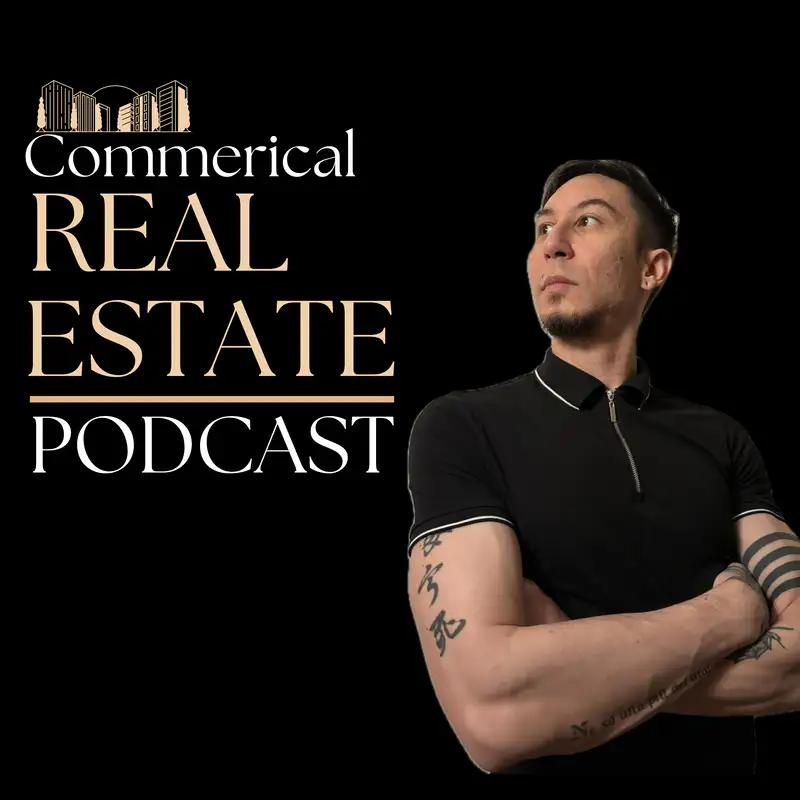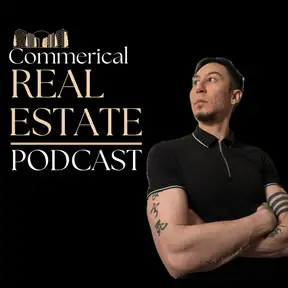Multifamily Millionaire - Commercial Real Estate: Chapter 1 - CCC
so basically what I wanna do is
for all the people that are interested in real estate
um I wanna like create these videos for you as well as for myself
so I don't forget them cause I have it
tendency should forget things
so as of most recent I'm reading about commercial real estate
so I'm reading Brandon Turner's book
The Multi Millionaire
volume 2 see
so the Multi Family Millionaire volume 2
create generation of wealth by investing in large
multi family real estate the Multi Family Millionaire 2
it's written by Brian Murray and Brandon Turner
I believe this part of the book
the majority of it was written by Brian Murray
and yeah so I'm reading this one right now
and I would like to take you through
the different chapters and things that I've been learning
so we'll start with
okay so
there's different types of
investment properties that you can go after in commercial
so you gotta figure out exactly which ones you wanna do
this is specifically towards multifamily
and in that section there's other types as well
so the first thing that you need to do is you have CCC
which is called CCC which is for crystal clear criteria
you gotta know exactly
the areas of things that you're interested in investing in
and I'm gonna give to you
what is outlined in the book for the different types that are there
and obviously there are multiple different types and stuff right
so it's kind of just like what you're interested in doing
so there's high rises mid rises
so high rise is anything that is nine floors with an
so high rise is anything that is nine floors with an
9 or more floors with an elevator
mid rise is anything with an elevator in like an urban area
usually less than nine floors
garden style is one two or 3 story apartments uh
in that have like a garden like setting in a suburban or rural
locations so they may not have an elevator
you see a lot of these in Sacramento
like if you go like towards Folsom or anywhere out there
another types of like apartment complexes
that's what they'll have and they could have set number of units
even in Austin when I was living there
that was technically a garden style complex and then walk up
there's four to six story buildings without an elevator
so if there's no elevator and there's four to six stories
it's called a walk up
manufactured housing communities
so we're talking mobile home parks
Brandon Turner has built and created a lot of wealth from
from these types of communities
there's also special purpose housing like student housing
senior housing and subsidized housing
so subsidized being like low income
senior housing meaning like catering specifically to the elderly
and then student housing of course
like usually these are by like colleges and stuff like that
there's also different there's four
types of classifications that these multi family properties can be
you have Class a which is the highest quality constructed
within the last 10 years
the most attractive locations present will
and command high rates generally
and there's Class B
likely to have been constructed in the past 20 years
good quality with a deferred maintanence
and both a and B this is important
both a and b
generally are invested by larger institutional buyers and lenders
so
you know you might have to go to them
if you want to acquire these types of properties
if you're doing stuff
you know without working with large institutions
and class C and d might be better
so what that looks like is for class C
you have older with more limited or dated amenities
finished fixtures and applications are probably outdated
or often dated
more challenging to finance
but they also tend to offer more opportunity
to the value of improvements right
so what you're looking at is like it's gonna be
it might be more difficult to get funding
your project might have to have more there
and you might have to explain a bit more about like
how you're going to do this
and have your strong team to be able to back you up on this
and maybe the rates will be adjusted for the risk
because it's more risky to
to be able to get that financing for it however
if you can terrific
it all just you just have to play with the numbers
class d older and the less desired locations as well
distress due to combination of low occupancy
crime rate
and overall just bad management could be the thing as well
so these are more challenging the finance
but also they tend to offer the most opportunity for value
add so if you have bad management
you can bring on your own a new property management team
if there's low occupancy you can bring more people in there
there's ways that you can add more value to that specific area
go with
partners or at least people that know
and have worked in these types of projects before
if you're taking people and wanting to say hey
let's go from Class a to class d stuff
they might not know exactly that smooth transition
you probably wanna have people have done some class d types of
investment properties under their belt and work with them
now here's some pricing so Class a and B usually finance
you can usually get finance for up to 75 to 80% of the Loan-To-Value
so simple example let's assume that you have access to 2.3 mil
and 30,000 in closing cost plus 270,000 for post closing cash needed
so it's total of 300,000 now 2.3 million - 300,000 equals two million
so you take that 2 million and that cut that takes over the
20% that you're gonna need for the down payment
you're able to take a loan for anywhere between 75 to 80%
so that 20% is 2 million so what's 100%
that's 10 million
so you're gonna be looking for properties around the 10 million marks
that could be 6 million 12 million for class C&D
the same amount of cash that you have will go less
due to the additional risk factor
so instead of going from 6 to 12 million in your range
you might be going down to 5 to 10 million
now
the sizes so let's say that you're looking for classy properties
without an apartment priced at 8 million in the market value
where you have an average price per unit of class C at 80,000
so
you can calculate the amount of units that you would be looking for
once you have the amount of value that you're able to raise
and the lending amount right
so once you have those numbers
you can then work backwards so let's say for Class C you have
let's say you want your your markets 8 mill right
you want an eight million dollar property
and you know that for Class C in your area is $80,000 per unit
you know now that if you divide 8 million by 80,000
you're looking at 100 units that you're looking for
so you're looking for 100 unit properties
now you can go on and say okay
where are the hundred unit properties in my area for the Class C right
occupancy
so most learners like to see at least a minimum of 85% occupancy
once you drop below that
your borrowing options to get a little bit more difficult
and you're taking on additional risk
yeah so Brian Murray in the book he talks about how he
they had a lower occupancy when they were going through the process um
and it was more difficult to get loans and then they were
they wanted to add the occupancy so that they get more people
and then do the appraisal
so that way the loan comes in with that that
that additional thing I believe that's what it said
so target returns how much you're looking to make back
so usually you don't discuss this to the brokers
or anyone else helping you find the deal
the amount of returns only usually stays with the investors
and you speak to the investors of what those returns are
if I would assume this reason is
because if you start talking to the brokers about those types of
the money that you've been making on these deals
then they're gonna negotiate like oh
if you're making that much
then you know how about you give us this much or whatever the case
or they'll know how to shop it and sell
sell the deal somewhere else
all right so sample criteria
so let's say you have a location right
you want to go primary and secondary cities throughout the southeast
with populations trending upwards population
you have growth in the area type of class
you want class C garden style
with or walk up workforce housing with reposition opportunities
age type is 1980s construction or newer
but will consider others on the case by case basis
and your price point is a 5 to 12 million
with 1.5 million to 3 million in funds provided
that's for renovations and everything
100 units or larger is what you're looking for a cap rate market rates
and the value add that you're looking for
looking to require assets
and opportunities to value add through physical improvement
or better property management
so Brian actually goes into
to the specific deal that he did
where the property management was terrible
they were actually like
you know stealing and siphoning stuff
and like
they would actually quote contractors more and then pocket the money
like things were like really bad
so
one of the first things that he did
once he had it under closing
is that he got rid of the property management company
and then he worked with a newer one
and then they also helped get better
vendors and stuff like that to help them with the property and
and just by doing that like
it saves significantly on the cost of theft that was going on
just there
and as far as physical improvements and stuff like that
usually during that period
you could do some renovations as well
so yeah and I think it's important to add like
there's different types of ways that you can like go about these
so like
you know we're talking specifically multi family
but like you can even like target
like motels or stuff like that
if it's like a one bedroom or two bedroom and like
just turn them into apartment complexes and stuff like that
I've seen like
areas and different types of cities where people
have made apartment units out of like
something that was originally like a motel
right so
you can do these types of things where you're like shifting like
oh we're taking a Motel 6
then making it into an apartment complex
right so those could be big value ads
you have to try to like learn to see like
what is that amount that you can make on that transition
and what are the key things to look for
and ideally while you're looking there
figure out who's doing it and seeing like hey
if they're trying to partner or work on
on these types of opportunities
that's my
that's my thinking about this
like a lot of people they want to work with you
and people are generally happy to speak with you
so I recommend doing that
so that's the first
chapter of this book and I'll go into more chapters in a bit
thanks

